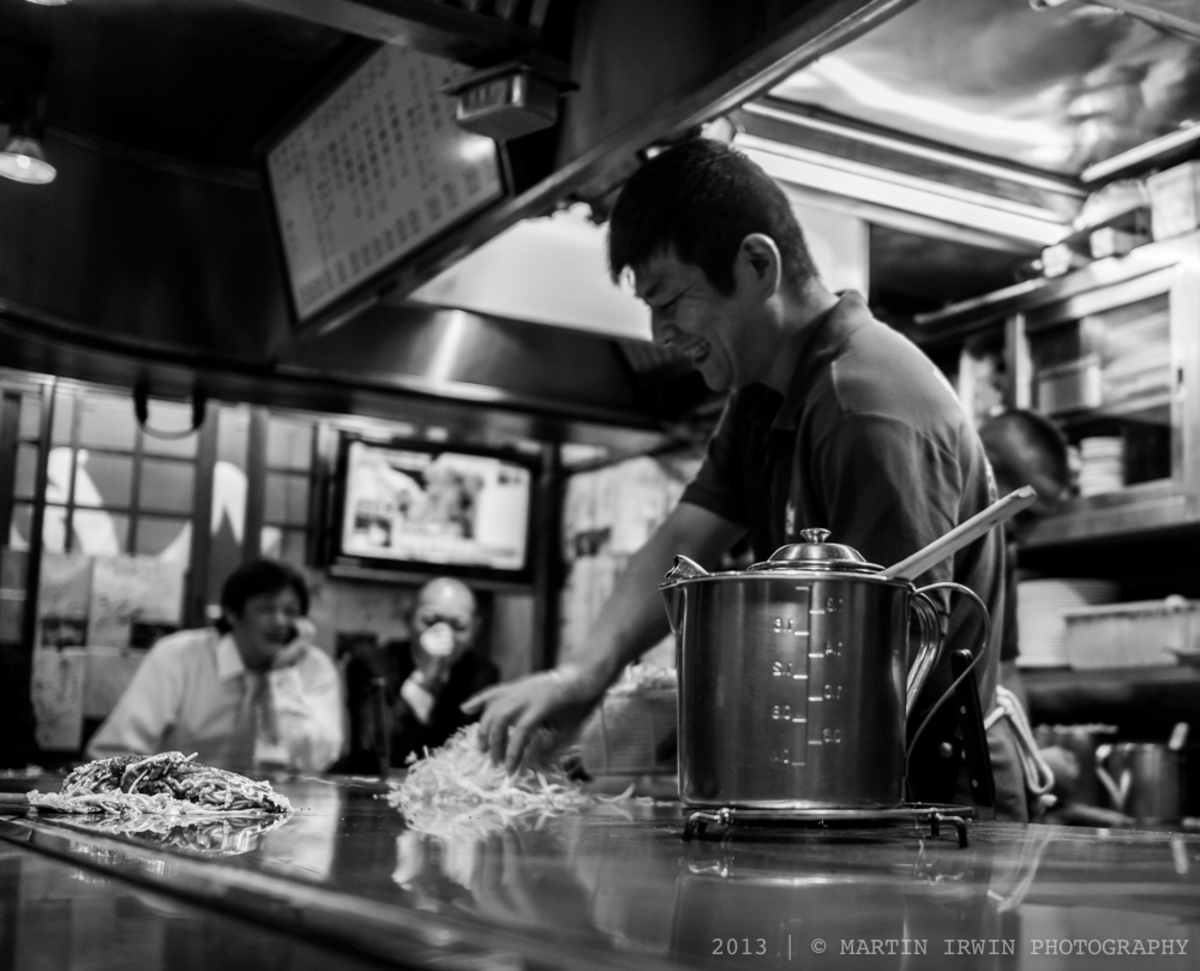Food in Hiroshima [Hiroshima Pt. 2]

| _Okonomiyaki | NEX-7 & SEL24F18Z | 24mm, 1/25s, f/2, ISO100, RAW_ |
Each and every prefecture of Japan has its own regional dish. Sometimes specific areas within a city might be famous for a certain type of cuisine. Hiroshima’s no different.
It’s possible to get the bullet train from Tokyo to Hiroshima in just under 4 hours, which is quite impressive (~800km). This time, however, we flew to Hiroshima directly from Tokyo’s domestic Haneda Airport (though it does have a few international flights), with Japanese airline ANA. Haneda airport is something else. It’s like being in a quiet museum. The atmosphere is so calming. We checked in the bags using just our mileage cards (didn’t show any ID for the entire journey), and went to have some breakfast to start the day.
The toasted panini and double espresso went down a treat, in the ground floor café… with a live pianist. Rather lovely. We headed back upstairs to departures, bought some food and drink for the flight (you can bring drinks onto Japanese domestic flights), and went through security.
Panini’s are not what Japan’s famous for. It’s probably most famous for… sushi? I’ve been here so long that I’ve forgotten what I used to think of Japan before living here! Anyway, Hiroshima is famous for its take on the Japanese “pancake” called “oko-nomi-yaki”. In the top left of the sign above, you’ll see the characters 広島名物 which essentially says “Hiroshima’s Speciality”. On the right of that, we find 元祖 which means “original”. OK, so we’ve found somewhere pretty good! The bottom left characters are お好み焼き (okonomiyaki), so we know this should be the original speciality pancakes of hiroshima! へんくつや is the name of the shop, which is pretty much in local dialect but means that they’re passionate about what they do. Excellent! Let’s grab a bite to eat…
We sat down and I promptly ordered some hot sake 「熱燗」which was warmed in the boiling tub of soba noodles which would make up our “pancake”. We ordered a local speciality (in Japanese, much to the surprise of the owners), and he got cooking (main picture, at the top). I’ll not describe the process, for fears of getting it wrong, but it’s essentially a case of breaking an egg onto the teppan (hot plate) to make a thin omelette/pancake, frying pre-boiled noodles on the teppan, adding cabbage, pork, squid, oysters… whatever, and then stacking it all together, topping it with a sweet sauce and green sprinklings (seaweed?). However it’s made, it’s delicious.
Oysters may seem like an odd ingredient into this pancake medley, but they’re probably Hiroshima’s most famous food. They find their way into everything. The next day, we made a special trip to a famous island (separate post on that to follow), and I really fancied some of the local oysters. I’d never had oysters before. I think there’s an episode of Mr. Bean, which really put me off. Yes, there is. Here. I think that put me off, when I was a child. They just never looked appetising These ones, however, very much did.
I bought myself a local beer, designed especially to be eaten with oysters, and waited whilst my oysters were cooked over a set of hot coals. I ordered some with a sprinkling of cheese on top, just in case I didn’t like them.
I loved them! They’re kind of like massive scallops… but more meaty. Hard to explain, but I’m now a convert. I ordered some the following night without the cheese.
Charlie doesn’t care for sea-food, so she had one of the local steamed bread rolls with beef inside. They looked lovely, and smelt fantastic. A good substitute!
For our evening meal, we had another local speciality, 広島つけ麺, pronounced “hiroshima tsu-ke-men”. It’s a spicy sauce packed full of sesame seeds, into which one drops in the side of noodles and salad, before eating. Simply gorgeous, and very refreshing!
In the mornings we had huge breakfasts at the hotel, comprising pancakes, mini-bread rolls, fresh orange juice, and a few too many cappuccinos. Well, we were on holiday…
The view from the hotel was a mixture of dramatic mountains, and modern-day Japanese skyscrapers. We were definitely in Japan, that’s for sure.
Getting around Hiroshima is quite easy. There’s no underground, as the city’s pretty small. It does have a very quaint tram (road car) system, which is reasonably priced. We bought a ¥2000 (15 EURO) ticket for unlimited 2-day travel, including ferry rides. Not a bad deal at all.
Earlier, I said we flew to Hiroshima. We did, but the airport is about 45 minutes from the centre of the city, by bus. This is where the total time between flying and bullet-trains diminishes to the point where one chooses by simply cost alone. Having said that, the JR Rail Pass, only available to tourists - and highly recommended, means all bullet train rides are paid for. Our city-airport bus (in the background of the shot) was occupied only by Japanese… and us. We weren’t the usual tourists!
Waiting for our lunchtime flight, we settled down to another bowl of tsukemen noodles (this one is actually tsuke-tan-tan-men, つけ担々麺). Delicious!
That concludes the “Food in Hiroshima” post - stay tuned for the next installment!